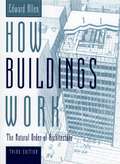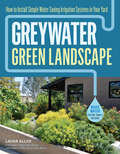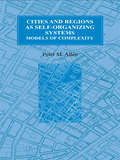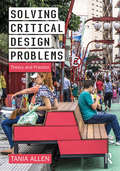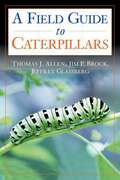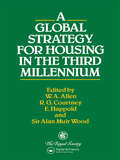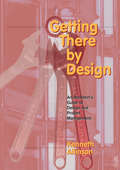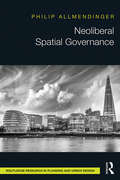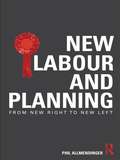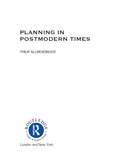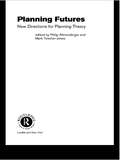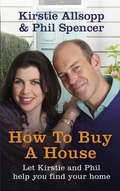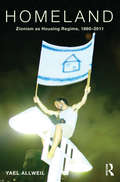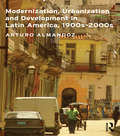- Table View
- List View
Grow, Cook, Nourish: How To Produce Your Own Vegetables, Fruit, Herbs, Nuts, And Flowers, With 300 Recipes
by Darina AllenWinner - Gourmand World Cookbook Awards: Best World Gourmand Cookbook 2017Growing your own food is exciting but, when it comes to knowing how to make the most of your produce, it can be daunting. In Grow, Cook, Nourish, bestselling author Darina Allen draws on more than 30 years of experience gardening at Ballymaloe to take you through an extensive list of vegetables, herbs and fruits. Each entry includes explanations of different varieties, practical information on cultivation, growing and maintenance, plus instructions for the best ways to cook produce as well as preserve and utilise a glut. With more than 500 recipes, including dishes for every ingredient, Darina shows how to use your harvest to its full potential. Vegetables range from annual crops such as chicory, radishes and kohlrabi to perennials like asparagus and spinach. Fruits cover apples, currants and peaches as well as the more unusual and interesting myrtle berries, loquats and medlars. Plus a comprehensive list of herbs, edible flowers and foraged foods such as samphire, wild garlic and blackberries.
How Buildings Work: The Natural Order of Architecture
by Edward AllenIllustrated with hundreds of illuminating line drawings, this classic guide reveals virtually every secret of a building's function: how it stands up, keeps its occupants safe and comfortable, gets built, grows old, and dies--and why some buildings do this so much better than others. Drawing on things he's learned from the many buildings he himself designed (and in some cases built with his own hands), Edward Allen explains complex phenomena such as the role of the sun in heating buildings and the range of structural devices that are used for support, from trusses and bearing walls to post-tensioned concrete beams and corbeled vaults. He stresses the importance of intelligent design in dealing with such problems as overheating and overcooling, excessive energy use, leaky roofs and windows, fire safety, and noisy interiors. He serves up some surprises: thermal insulation is generally a better investment than solar collectors; board fences are not effective noise barriers; there's one type of window that can be left open during a rainstorm. The new edition emphasizes "green" architecture and eco-conscious design and construction. It features a prologue on sustainable construction, and includes new information on topics such as the collapse of the World Trade Center, sick building syndrome, and EIFS failures and how they could have been prevented. Allen also highlights the array of amazing new building materials now available, such as self-cleaning glass, photovoltaics, transparent ceramics, cloud gel, and super-high-strength concrete and structural fibers. Edward Allen makes it easy for everyone--from armchair architects and sidewalk superintendents to students of architecture and construction--to understand the mysteries and complexities of even the largest building, from how it recycles waste and controls the movement of air, to how it is kept alive and growing.
Greywater, Green Landscape: How to Install Simple Water-Saving Irrigation Systems in Your Yard
by Laura AllenStep-by-step instructions show you how to plan, install, and use simple, low-tech solutions to redirect and reuse greywater from sinks, showers, and washing machines to maintain your home landscape and garden.
The Water-Wise Home: How to Conserve, Capture, and Reuse Water in Your Home and Landscape
by Laura AllenLearn how to reduce water use in your home and build systems that reuse the water you do use.
Cities and Regions as Self-Organizing Systems: Models of Complexity
by Peter M. AllenA clear methodological and philosophical introduction to complexity theory as applied to urban and regional systems is given, together with a detailed series of modelling case studies compiled over the last couple of decades. Based on the new complex systems thinking, mathematical models are developed which attempt to simulate the evolution of towns, cities, and regions and the complicated co-evolutionary interaction there is both between and within them. The aim of these models is to help policy analysis and decision-making in urban and regional planning, energy policy, transport policy, and many other areas of service provision, infrastructure planning, and investment that are necessary for a successful society.
Cities and Regions as Self-Organizing Systems: Models of Complexity (Environmental Problems And Social Dynamics Ser. #Vol. 1)
by Peter M. AllenA clear methodological and philosophical introduction to complexity theory as applied to urban and regional systems is given, together with a detailed series of modelling case studies compiled over the last couple of decades. Based on the new complex systems thinking, mathematical models are developed which attempt to simulate the evolution of towns, cities, and regions and the complicated co-evolutionary interaction there is both between and within them. The aim of these models is to help policy analysis and decision-making in urban and regional planning, energy policy, transport policy, and many other areas of service provision, infrastructure planning, and investment that are necessary for a successful society.
Solving Critical Design Problems: Theory and Practice
by Tania AllenSolving Critical Design Problems demonstrates both how design is increasingly used to solve large, complex, modern-day problems and, as a result, how the role of the designer continues to develop in response. With 13 case studies from various fields, including program and product design, Tania Allen shows how types of design thinking, such as systems thinking, metaphorical thinking, and empathy, can be used together with methods, such as brainstorming, design fiction, and prototyping. This book helps you find ways out of your design problems by giving you other ways to look at your ideas, so that your designs make sense in their setting. Solving Critical Design Problems encourages a design approach that challenges assumptions and allows designers to take on a more critical and creative role. With over 100 images, this book will appeal to students in design studios, industrial and product design, as well as landscape and urban design.
Solving Critical Design Problems: Theory and Practice
by Tania AllenSolving Critical Design Problems demonstrates both how design is increasingly used to solve large, complex, modern-day problems and, as a result, how the role of the designer continues to develop in response. With 13 case studies from various fields, including program and product design, Tania Allen shows how types of design thinking, such as systems thinking, metaphorical thinking, and empathy, can be used together with methods, such as brainstorming, design fiction, and prototyping. This book helps you find ways out of your design problems by giving you other ways to look at your ideas, so that your designs make sense in their setting. Solving Critical Design Problems encourages a design approach that challenges assumptions and allows designers to take on a more critical and creative role. With over 100 images, this book will appeal to students in design studios, industrial and product design, as well as landscape and urban design.
Caterpillars in the Field and Garden: A Field Guide to the Butterfly Caterpillars of North America (Butterflies Through Binoculars)
by Thomas J. Allen Jim P. Brock Jeffrey GlassbergJeffrey Glassberg's acclaimed Butterflies through Binoculars guides have revolutionized the way we view butterflies. Now there's a field guide in the same practical format, and with the same emphasis on conservation, to identify caterpillars. Caterpillars are as varied, fascinating, and often as colorful as the adult butterflies they become. This is the most comprehensive guide to these creatures available. It contains all the information necessary to find and identify the caterpillars of North America--from Two-tailed Swallowtails, some of the largest butterfly caterpillars at just over two inches when fully grown, to tiny Western Pygmy-Blues. Caterpillar seekers will learn how to distinguish between butterfly caterpillars and moth caterpillars, where and how to find caterpillars, and the visual differences between young and older caterpillars. Each species section describes how to identify the caterpillar, complete with brilliant photos--many published here for the first time. To make for easy field use, each caterpillar's key physical features, abundance, habitat, and major hostplants are listed on the same page as its photo. The book also contains a special section on butterfly gardening, offering valuable information on how to set up a butterfly garden and raise healthy butterfly caterpillars, and provides a thorough list of the plants butterflies most like to feast on. From the concerned gardener who wishes not to kill caterpillars that may one day become beautiful butterflies to the serious butterflier wishing to take the hobby to the next level, this remarkable guide will provide all of the information necessary for an enriching caterpillar experience.
A Global Strategy for Housing in the Third Millennium
by W. A. Allen R. G. Courtney E. Happold A. M. WoodThis book outlines the emerging determinants, in a global context, for the provision of housing for the growing, shifting and changing populations. In doing so the reader will be encouraged to forsee the complementary evolution in the planning, design and construction of housing in the developed and developing world.
A Global Strategy for Housing in the Third Millennium (Technology In The Third Millennium Ser.)
by W. A. Allen R. G. Courtney E. Happold Alan Muir WoodThis book outlines the emerging determinants, in a global context, for the provision of housing for the growing, shifting and changing populations. In doing so the reader will be encouraged to forsee the complementary evolution in the planning, design and construction of housing in the developed and developing world.
Getting There by Design
by Kenneth AllinsonThere was military project management. There was construction project management. Then there was business project management, a tool described as 'the wave of the future'. Where are architects in all this, professionals whose work has always been project-driven? There is design management in engineering, product design, graphics, packaging, management theory and even in politics. Construction consultants talk about managing design. When are architects going to become committed to managing design?Getting There by Design adopts an architect's view to design and project management. It sets out the fundamental principles and shows how they are applied, dealing with these two topics as one indivisible subject.'Getting There by Design' demonstrates how to: - make project efforts goal-oriented - set up a planning and monitoring basis to architectural projects - put the architect's fee calculus on a rationale basis - diagnose your firm's practice culture - develop successful teamsPut your practice onto a more effective basis.Ken Allinson is an architect in private practice and principal of 'Architectural Dialogue'. He also teaches design studio and lectures on design and project management. He was formerly an associate at DEGW London and the Terry Farrell Partnership. He has practice experience in Europe, the USA and Japan and is the author of 'The Wild Card of Design' (1993).
Getting There by Design
by Kenneth AllinsonThere was military project management. There was construction project management. Then there was business project management, a tool described as 'the wave of the future'. Where are architects in all this, professionals whose work has always been project-driven? There is design management in engineering, product design, graphics, packaging, management theory and even in politics. Construction consultants talk about managing design. When are architects going to become committed to managing design?Getting There by Design adopts an architect's view to design and project management. It sets out the fundamental principles and shows how they are applied, dealing with these two topics as one indivisible subject.'Getting There by Design' demonstrates how to: - make project efforts goal-oriented - set up a planning and monitoring basis to architectural projects - put the architect's fee calculus on a rationale basis - diagnose your firm's practice culture - develop successful teamsPut your practice onto a more effective basis.Ken Allinson is an architect in private practice and principal of 'Architectural Dialogue'. He also teaches design studio and lectures on design and project management. He was formerly an associate at DEGW London and the Terry Farrell Partnership. He has practice experience in Europe, the USA and Japan and is the author of 'The Wild Card of Design' (1993).
Neoliberal Spatial Governance
by Phil AllmendingerNeoliberal Spatial Governance explores the changing nature of English town and city planning as it has slowly but clearly transformed. Once a system for regulating and balancing change in the built and natural environments in the public interest, planning now finds itself facilitating development and economic growth for narrow, sectional interests. Whilst there is a lip service towards traditional values, the progressive aims and inclusivity that provided planning’s legitimacy and broad support have now largely disappeared. The result is a growing backlash of distrust and discontent as planning has evolved into neoliberal spatial governance. The tragedy of this change is that at a time when planning has a critical role in tackling major issues such as housing affordability and climate change, it finds itself poorly resourced with low professional morale, lacking legitimacy and support from local communities, accused of bureaucracy and ‘red tape’ from businesses and ministers and subject to regular, disruptive reforms. Yet all is not lost. There is still demand and support for more comprehensive and progressive planning, one that is not purely driven by the needs of developers and investors. Resistance against the idea that planning exists to help roll out development, is growing. Neoliberal Spatial Governance explores the background and implications of the changes in planning under the governments of the past four decades and the ways we might think about halting and reversing this shift.
Neoliberal Spatial Governance
by Phil AllmendingerNeoliberal Spatial Governance explores the changing nature of English town and city planning as it has slowly but clearly transformed. Once a system for regulating and balancing change in the built and natural environments in the public interest, planning now finds itself facilitating development and economic growth for narrow, sectional interests. Whilst there is a lip service towards traditional values, the progressive aims and inclusivity that provided planning’s legitimacy and broad support have now largely disappeared. The result is a growing backlash of distrust and discontent as planning has evolved into neoliberal spatial governance. The tragedy of this change is that at a time when planning has a critical role in tackling major issues such as housing affordability and climate change, it finds itself poorly resourced with low professional morale, lacking legitimacy and support from local communities, accused of bureaucracy and ‘red tape’ from businesses and ministers and subject to regular, disruptive reforms. Yet all is not lost. There is still demand and support for more comprehensive and progressive planning, one that is not purely driven by the needs of developers and investors. Resistance against the idea that planning exists to help roll out development, is growing. Neoliberal Spatial Governance explores the background and implications of the changes in planning under the governments of the past four decades and the ways we might think about halting and reversing this shift.
New Labour and Planning: From New Right to New Left
by Phil AllmendingerFollowing the Thatcher and Major administrations there was an apparent renaissance of planning under New Labour. After a slow start in which Labour’s view of planning owed more to a neo-liberal, rolled back state model reminiscent of the New Right the Government began to appreciate that many of its wider objectives including economic development, climate change, democratic renewal, social justice and housing affordability intersected with and were critically dependent upon the planning system. A wide range of initiatives, management processes, governance vehicles and policy documents emanated from Government. Planning, like other areas of the public sector, was to be reformed and modernised as well as given a prime role in tackling national, high profile priorities such as increasing housing supply and improving economic competitiveness. Drawing upon an institutionalist framework the book also seeks to understand how and in what circumstances change emerges, either in an evolutionary or punctuated way. It will, for the first time, chart and explore the changing nature of development and planning over the Labour era whilst also stepping back and reflecting upon what such changes mean for planning generally and the likely future trajectories of reform and spatial governance.
New Labour and Planning: From New Right to New Left
by Phil AllmendingerFollowing the Thatcher and Major administrations there was an apparent renaissance of planning under New Labour. After a slow start in which Labour’s view of planning owed more to a neo-liberal, rolled back state model reminiscent of the New Right the Government began to appreciate that many of its wider objectives including economic development, climate change, democratic renewal, social justice and housing affordability intersected with and were critically dependent upon the planning system. A wide range of initiatives, management processes, governance vehicles and policy documents emanated from Government. Planning, like other areas of the public sector, was to be reformed and modernised as well as given a prime role in tackling national, high profile priorities such as increasing housing supply and improving economic competitiveness. Drawing upon an institutionalist framework the book also seeks to understand how and in what circumstances change emerges, either in an evolutionary or punctuated way. It will, for the first time, chart and explore the changing nature of development and planning over the Labour era whilst also stepping back and reflecting upon what such changes mean for planning generally and the likely future trajectories of reform and spatial governance.
Planning in Postmodern Times (RTPI Library Series)
by Philip AllmendingerPostmodern social theory has provided significant insights into our understanding of society and its components. Key thinkers including Foucault, Baudrillard and Lyotard have challenged existing ideas about power and rationality in society. This book analyses planning from a postmodern perspective and explores alternative conceptions based on a combination of postmodern thinking and other fields of social theory. In doing so, it exposes some of the limits of postmodern social theory while providing an alternative conception of planning in the twenty-first century.This title will appeal to anyone interested in how we think and act in relation to cities, urban planning and governance.
Planning in Postmodern Times (RTPI Library Series)
by Philip AllmendingerPostmodern social theory has provided significant insights into our understanding of society and its components. Key thinkers including Foucault, Baudrillard and Lyotard have challenged existing ideas about power and rationality in society. This book analyses planning from a postmodern perspective and explores alternative conceptions based on a combination of postmodern thinking and other fields of social theory. In doing so, it exposes some of the limits of postmodern social theory while providing an alternative conception of planning in the twenty-first century.This title will appeal to anyone interested in how we think and act in relation to cities, urban planning and governance.
Planning Futures: New Directions for Planning Theory
by Philip Allmendinger Mark Tewdwr-JonePlanning theory is currently in a confused state as a consequence of a number of changes over the last ten years in planning practice and social and economic theory. Even prior to these events, planning theory was an uncertain discipline, reflecting planning's precarious position between and resting upon a range of professional subject areas and philosophical roots. Planning Futures is an attempt to pin down the constantly evolving landscape of planning theory and to chart a path through this fast changing field.Planning Futures is an up-to-date reader on planning theory, but adds something more to the subject area than a mere textbook. The contributors have attempted to bridge theory and practice while putting forward new theoretical ideas. By drawing upon examples from planning practice and case study scenarios, the authors ensure that the work discusses planning theory within the context of present planning practice. Case studies are drawn from an international arena, from the UK, Europe, South Africa and Australia.
Planning Futures: New Directions for Planning Theory
by Philip Allmendinger Mark Tewdwr-JonesPlanning theory is currently in a confused state as a consequence of a number of changes over the last ten years in planning practice and social and economic theory. Even prior to these events, planning theory was an uncertain discipline, reflecting planning's precarious position between and resting upon a range of professional subject areas and philosophical roots. Planning Futures is an attempt to pin down the constantly evolving landscape of planning theory and to chart a path through this fast changing field.Planning Futures is an up-to-date reader on planning theory, but adds something more to the subject area than a mere textbook. The contributors have attempted to bridge theory and practice while putting forward new theoretical ideas. By drawing upon examples from planning practice and case study scenarios, the authors ensure that the work discusses planning theory within the context of present planning practice. Case studies are drawn from an international arena, from the UK, Europe, South Africa and Australia.
How to Buy a House
by Kirstie Allsopp Phil SpencerBuying a house should be one of the most rewarding things you can do, but it's also one of biggest financial commitments you'll ever make so not surprisingly it can be very stressful.In How to Buy a House, professional homefinders Phil and Kirstie, from Location Location Location, balance the odds, helping you to find and buy your new home with confidence and success, whether you're getting a foot on the ladder or upsizing.From city flats to country retreats, Kirstie and Phil take you through the buying process, highlighting pitfalls and offering practical tips that could save you time, money and heartache, in this essential companion.FULLY UPDATED EDITION
Homeland: Zionism as Housing Regime, 1860–2011 (Planning, History and Environment Series)
by Yael AllweilOn 29 March 2016 the New York based online journal, Realty Today reported ‘Israel is facing a housing crisis with …[the] home inventory lacking 100,000 apartments… House prices, which have more than doubled in less than a decade, resulted in a mass protest back in 2011’. As Yael Allweil reveals in her fascinating book, housing has played a pivotal role in the history of nationalism and nation building in Israel-Palestine. She adopts the concept of ‘homeland’ to highlight how land and housing are central to both Zionism and Palestinian nationalism, and how the history of Zionist and Palestinian national housing have been inseparably intertwined from the introduction of the Ottoman Land Code in 1858 to the present day. Following the Introduction, Part I, ‘Historiographies of Land Reform and Nationalism’, discusses the formation of nationalism as the direct result of the Ottoman land code of 1858. Part II, ‘Housing as Proto-Nationalism’ focuses on housing as the means to claim rights over the homeland. Part III, ‘Housing and Nation-Building in the Age of State Sovereignty’, explores the effects of statehood on national housing across several strata of Israeli society. The Afterword discusses housing as the quintessential object of agonistic conflict in Israel-Palestine, around which the Israeli polity is formed and reformed.
Homeland: Zionism as Housing Regime, 1860–2011 (Planning, History and Environment Series)
by Yael AllweilOn 29 March 2016 the New York based online journal, Realty Today reported ‘Israel is facing a housing crisis with …[the] home inventory lacking 100,000 apartments… House prices, which have more than doubled in less than a decade, resulted in a mass protest back in 2011’. As Yael Allweil reveals in her fascinating book, housing has played a pivotal role in the history of nationalism and nation building in Israel-Palestine. She adopts the concept of ‘homeland’ to highlight how land and housing are central to both Zionism and Palestinian nationalism, and how the history of Zionist and Palestinian national housing have been inseparably intertwined from the introduction of the Ottoman Land Code in 1858 to the present day. Following the Introduction, Part I, ‘Historiographies of Land Reform and Nationalism’, discusses the formation of nationalism as the direct result of the Ottoman land code of 1858. Part II, ‘Housing as Proto-Nationalism’ focuses on housing as the means to claim rights over the homeland. Part III, ‘Housing and Nation-Building in the Age of State Sovereignty’, explores the effects of statehood on national housing across several strata of Israeli society. The Afterword discusses housing as the quintessential object of agonistic conflict in Israel-Palestine, around which the Israeli polity is formed and reformed.
Modernization, Urbanization and Development in Latin America, 1900s - 2000s (Planning, History and Environment Series)
by Arturo AlmandozIn this book Arturo Almandoz places the major episodes of Latin America’s twentieth and early twenty-first century urban history within the changing relationship between industrialization and urbanization, modernization and development. This relationship began in the early twentieth century, when industrialization and urbanization became significant in the region, and ends at the beginning of the twenty-first century, when new tensions between liberal globalization and populist nationalism challenge development in the subcontinent, much of which is still poverty stricken. Latin America’s twentieth-century modernization and development are closely related to nineteenth-century ideals of progress and civilization, and for this reason Almandoz opens with a brief review of that legacy for the different countries that are the focus of his book – Mexico, Chile, Brazil, Argentina and Venezuela – but with references to others. He then explores the regional distortions, which resulted from the interaction between industrialization and urbanization, and how the imbalance between urbanization and the productive system helps to explain why ‘take-off’ was not followed by the ‘drive to maturity’ in Latin American countries. He suggests that the close yet troublesome relationship with the United States, the recurrence of dictatorships and autocratic regimes, and Marxist influences in many domains, are all factors that explain Latin America’s stagnation and underdevelopment up to the so-called ‘lost decade’ of 1980s. He shows how Latin America’s fate changed in the late twentieth and early twenty-first century, when neoliberal programmes, political compromise and constitutional reform dismantled the traditional model of the corporate state and centralized planning. He reveals how economic growth and social improvements have been attained by politically left-wing yet economically open-market countries while others have resumed populism and state intervention. All these trends make up the complex scenario for the new century – especially when considered against the background of vibrant metropolises that are the main actors in the book.

